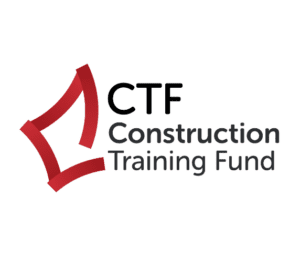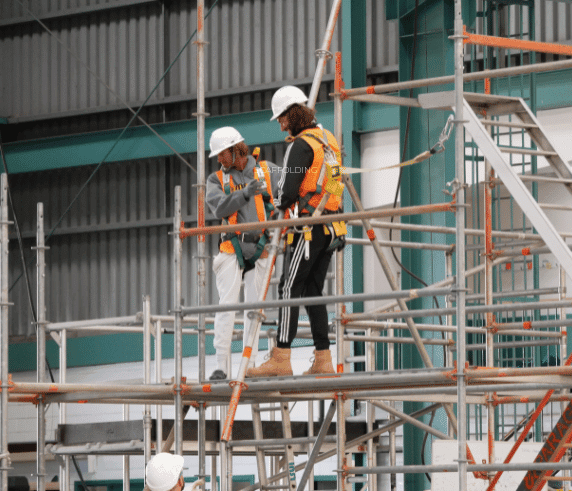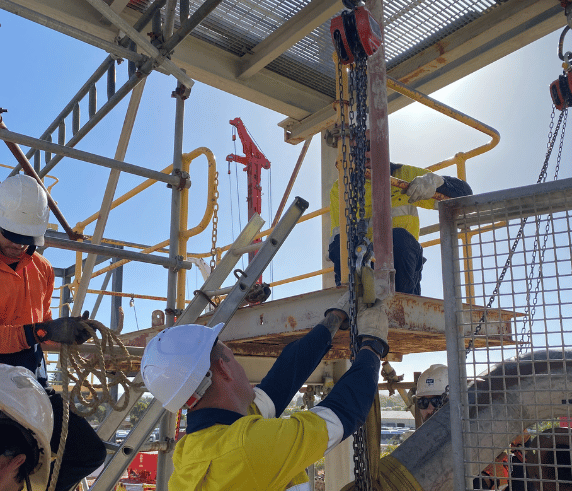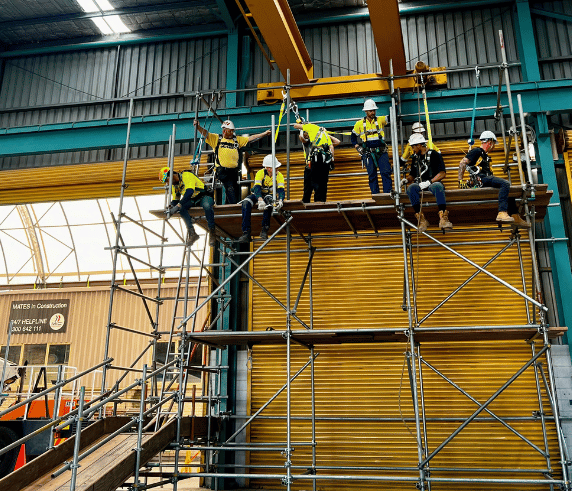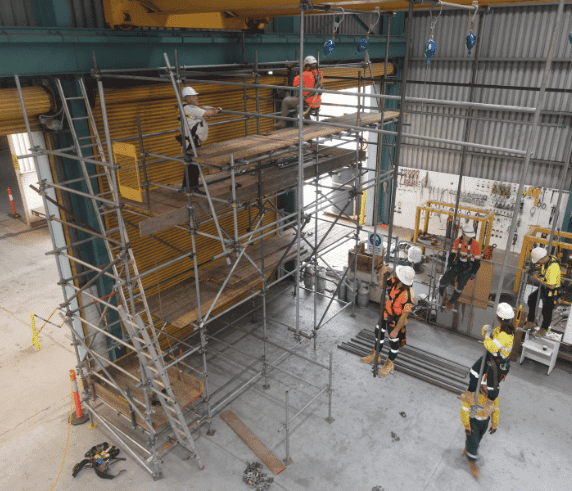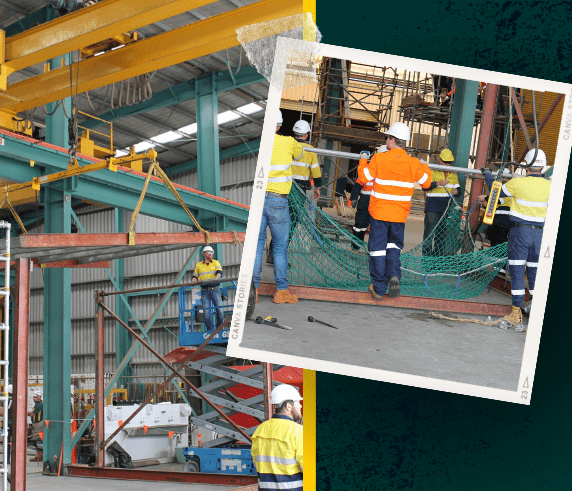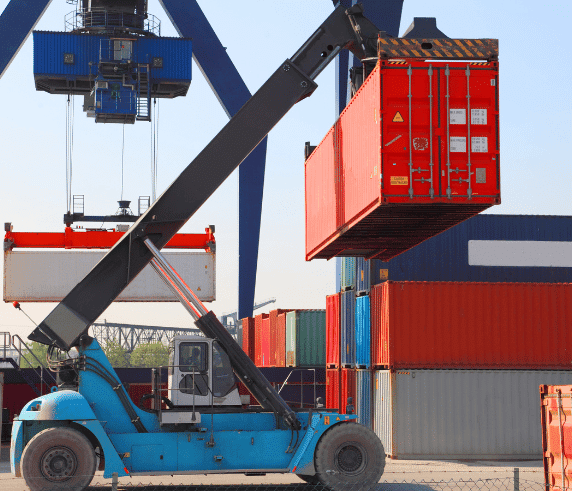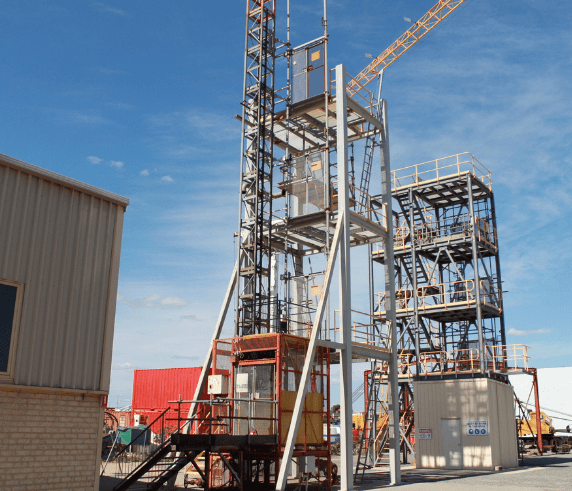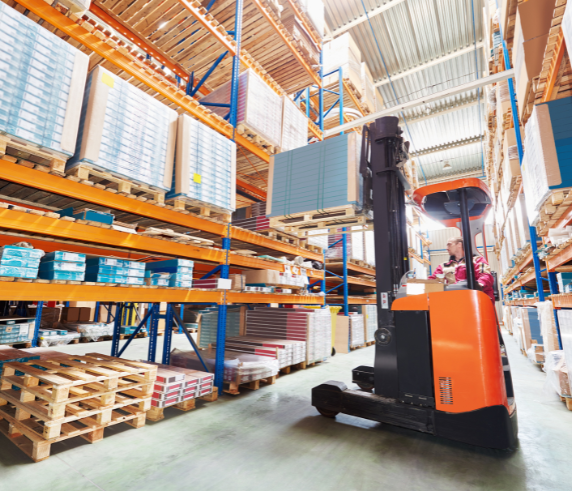All necessary requirements are detailed in the “Entry Requirements” section above. If you are unsure, please submit a ticket by clicking the “Enquire Now” button.
Duration
3 Days (7:30 AM – 3:30 PM)
Cost
$1500
Sale Price!
$950
Location
Accredited
Funding
Pre-Requisite & Requirement
Available Intakes
WelshpoolSave More With Combo!
| Date | Time | Location | Available Spaces | Cost | |
| 18 – 20 December 2025 | 07:30 am – 03:30 pm | 107 Radium Street Welshpool | 9 | $950.00 | |
| 22 – 24 December 2025 | 07:30 am – 03:30 pm | 107 Radium Street Welshpool | 9 | $950.00 | |
| 5 – 7 January 2026 | 07:30 am – 03:30 pm | 107 Radium Street Welshpool | 9 | $950.00 | |
| 12 – 14 January 2026 | 07:30 am – 03:30 pm | 107 Radium Street Welshpool | 9 | $950.00 | |
| 19 – 21 January 2026 | 07:30 am – 03:30 pm | 107 Radium Street Welshpool | 10 | $950.00 | |
| 27 – 29 January 2026 | 07:30 am – 03:30 pm | 107 Radium Street Welshpool | 9 | $950.00 | |
| 2 – 4 February 2026 | 07:30 am – 03:30 pm | 107 Radium Street Welshpool | 10 | $1,500.00 | |
| 9 – 11 February 2026 | 07:30 am – 03:30 pm | 107 Radium Street Welshpool | 10 | $1,500.00 | |
| 16 – 18 February 2026 | 07:30 am – 03:30 pm | 107 Radium Street Welshpool | 10 | $1,500.00 | |
| 23 – 25 February 2026 | 07:30 am – 03:30 pm | 107 Radium Street Welshpool | 10 | $1,500.00 | |
| 3 – 5 March 2026 | 07:30 am – 03:30 pm | 107 Radium Street Welshpool | 10 | $1,500.00 | |
| 9 – 11 March 2026 | 07:30 am – 03:30 pm | 107 Radium Street Welshpool | 10 | $1,500.00 | |
| 16 – 18 March 2026 | 07:30 am – 03:30 pm | 107 Radium Street Welshpool | 10 | $1,500.00 | |
| 23 – 25 March 2026 | 07:30 am – 03:30 pm | 107 Radium Street Welshpool | 10 | $1,500.00 | |
| 30 March – 1 April 2026 | 07:30 am – 03:30 pm | 107 Radium Street Welshpool | 10 | $1,500.00 | |
| 7 – 9 April 2026 | 07:30 am – 03:30 pm | 107 Radium Street Welshpool | 10 | $1,500.00 | |
| 13 – 15 April 2026 | 07:30 am – 03:30 pm | 107 Radium Street Welshpool | 10 | $1,500.00 | |
| 20 – 22 April 2026 | 07:30 am – 03:30 pm | 107 Radium Street Welshpool | 10 | $1,500.00 | |
| 28 – 30 April 2026 | 07:30 am – 03:30 pm | 107 Radium Street Welshpool | 10 | $1,500.00 |
CTF Funding Available
Advanced Scaffolding Ticket in Perth Course Fee $950 / CTF Eligible - You Pay Only $285* Conditions Apply
Advanced Scaffolding Course Perth overview
This Advanced Scaffolding Course Perth WA (CPCCLSF4001) covers erecting, altering, and dismantling advanced level scaffolds. This course includes intermediate tasks plus hung and suspended scaffolds, aimed at licensing. Enrol in our Advanced Scaffolding Course Perth to become a certified Advanced Scaffolder and obtain your Advanced Scaffolding Ticket.
Before attending this course, participants must hold a valid/current Statement of Attainment for CPCCLSF2001 – Licence to Perform Scaffolding Basic & CPCCLSF3001 – Licence to Perform Scaffolding Intermediate and a valid High Risk Work Licence (HRWL) for Scaffolding Basic and Scaffolding Intermediate. If you don’t have this pre-requisite qualification, you are not allowed to join the course and Saferight has all rights to cancel your enrolment.
Students will attain the theory and practical application to perform advanced scaffolding properly and will be able to:
Plan Task
- Review instructions
- Consult, gather safety and compliance information
- Identify hazards
- Calculate scaffold loads
- Establish communication.
Select and Inspect Equipment
- Choose, check and inspect risk controls, PPE, and scaffold gear
Set Up Task
- Communicate plans
- Ensure safety measures
- Assess ground suitability
- Prepare scaffold.
Advanced Scaffolding Activities
- Erect, operate, and dismantle advanced scaffolds like
- Cantilevered hoists
- Hung scaffolds (using chains, wire ropes, or tubes)
- Suspended scaffolds with dual needle systems and powered winches
- Maintaining stability and adhering to workplace and manufacturer standards.
Complete Task
- Clear area
- Inspect, store, and document scaffolding gear
- Dismantle safety measures
Career Opportunities
Advanced scaffolders for complex and high-risk structures are tasked with constructing and dismantling intricate scaffolding setups in challenging environments. These roles require advanced skills and a thorough understanding of safety protocols to ensure the safe execution of projects in industrial, commercial, and construction settings.
Rigging Intermediate Course in Perth WA Job Information
Job Roles and Responsibilities
Design and Erection
Planning and constructing complex scaffolding structures that meet specific project requirements and safety standards.
Safety Compliance
Implementing and adhering to strict safety procedures to minimize risks associated with high-risk scaffolding tasks.
Inspection and Maintenance
Regularly inspecting scaffolding structures for integrity and safety, performing maintenance and repairs as needed.
Team Leadership
Leading and supervising teams of scaffolders, ensuring tasks are completed efficiently and safely.
Typical Job Locations
Industrial Sites
Refineries, chemical plants, and mining operations in regions such as Kwinana and the Pilbara.
Commercial Projects
High-rise buildings and large construction sites in urban areas like Perth.
Remote Locations
FIFO opportunities for projects in remote areas requiring advanced scaffolding skills.
Salary and Benefits
Hourly Wages
Advanced scaffolders salary ranges from $44 to $57 per hour, with some positions offering higher rates depending on the complexity and risk level of the project, the average annual salary for an Advanced Scaffolder jobs in Perth ranges from $90,778 to $94,227. For more information on Advanced Scaffolding salaries in Perth visit here.
Additional Benefits
Include site allowances, travel and accommodation for FIFO roles, superannuation paid on all hours worked, and long service leave benefits.
Job Opportunities
Positions are advertised on job platforms like SEEK and Indeed, where detailed job descriptions and application processes can be found. This provides a wide range of opportunities for those interested in advanced scaffolding roles for complex and high-risk structures across various sectors in Western Australia. Search Advanced Scaffolding jobs in West Australia here.
Accredited Units
You will be enrolled into the following unit of competency:
Entry Requirements

To enter the Advanced Scaffolding Course Perth WA, you must meet the following requirements:
- Students must hold a valid Statement of Attainment/Qualification & HRWL prior to commencing this course with Saferight:
- CPCCLSF2001 – Licence to erect, alter and dismantle scaffolding basic level
- CPCCLSF3001 – Licence to erect, alter and dismantle scaffolding intermediate level
- RIIWHS204E – Work safely at heights
- Applicants must hold a valid:
- High-Risk Work Licence OR a copy of their current Notice of Assessment (NOA), and
- Statement of Attainment/Certificate
- Must be 18 years old and above
- Present a valid photo I.D. on arrival
- If you have any physical conditions that may affect your ability to complete a course, please visit a doctor and obtain a “Fit for Work” certificate, and send it to our bookings email.
- Please note, Saferight reserves the right to cancel your enrolment if this documentation is not provided and you are deemed unfit for training. Additionally, cancellation fees will apply if adequate notice is not given.
- Hi-vis shirt or vest must be worn while attending your course – failure to comply may prevent you from participating. Steel cap boots are required, and all jewellery must be removed before the course begins.
- Ability to read, write and understand English
- Saferight is dedicated to supporting all students, including those with Language, Literacy, and Numeracy (LLN) needs. If your LLN skills are assessed as needing improvement to meet the course requirements, we may recommend additional support or training to help you succeed. If you have any concerns about your LLN skills, we encourage you to contact us before enrolling.
- Individuals holding a student visa are not eligible to enrol in, participate in, or attend this course, whether face-to-face or online, as Saferight is not registered with CRICOS (Commonwealth Register of Institutions and Courses for Overseas Students). Student visa holders are encouraged to seek training with a CRICOS-registered institution to meet their requirements. For more information please click here.
- Applicants must hold a valid High-Risk Work Licence and provide both a copy of their current Notice of Assessment (NOA) and their Statement of Attainment.
Disclaimer: Students must complete the post-enrolment learner details form sent via the booking confirmation email prior to attending the course. Failure to fill out the post-enrolment form before training will result in certificates not being issued.
Assessment
- Theory Component
- Practical Component
If you already have a Scaffolding Advanced ticket and only need a Verification of competency, A VOC for Scaffolding Advanced is available at Saferight. For more information, please visit our VOC Scaffolding Advanced course.
Certification
On successful completion of the Advanced Scaffolding Course Perth, students will receive a:
- Nationally Recognised Statement of Attainment for CPCCLSF4001 – Licence to erect, alter and dismantle scaffolding advanced level
The Unique Student Identifier (USI) must be supplied and verified prior to issuance.
High Risk Work Licence
Disclaimer: Competence in this unit does not in itself result in a High-Risk Work Licence (HRWL) to operate this equipment or perform this skill. The course price listed excludes HRWL application fees..
A High Risk Work Licence (HRWL) is a photo ID issued to those trained and assessed as competent for high-risk.
Saferight can assist you with your High Risk Work Licence (HRWL) applications to WorkSafe. Please follow the instructions below when enrolling through our website, based on your specific needs:
For New HRWL Applications
- Select “High Risk Work Licence (New)” and “Photo (6x)” during the enrolment process.
- Important: You must select the “Photo (6x)” option when applying for a new HRWL. If you forget to select the photo option, the charge will be added manually when you attend the training.
For Transferring an Existing HRWL
- Select “High Risk Work Licence (Transfer)” and “Photo (6x)” during the enrolment process.
- Important: You must select the “Photo (6x)” option when applying for transferring a HRWL. If you forget to select the photo option, the charge will be added manually when you attend the training.
For Adding a New Class to an Existing HRWL:
- Select “High Risk Work Licence (Adding a Class)” during the enrolment process.
-
- Note: If you’re adding a class to an existing HRWL, you do not need to select the “Photo (6x)” option.
If You Want to Handle Your HRWL Applications Yourself:
- Simply proceed with your enrolment without selecting any of the HRWL options. This allows you to manage your HRWL application independently.
-
- For detailed guidance on applying for a new HRWL yourself, please visit: https://www.commerce.wa.gov.au/worksafe/apply-new-high-risk-work-licence-0
- To add a new licence class to your existing HRWL yourself, please visit: https://www.commerce.wa.gov.au/worksafe/add-class-your-high-risk-work-licence
Duration
This course is available for delivery over 3 Days (7.30AM – 3.30PM)
Please choose the course date that best fits your preferences and availability from the enrolment table.
Delivery Locations
This training course is delivered at the following location:
Fees
Refer to the price listed in the enrolment table.
Group bookings/Onsite training is available at your site or ours. Please click the ‘Enquire Now’ button for further information on pricing and site requirements for our Advanced Scaffolding Course in Perth. For our cancellation and refund policy, please refer to our Refund/Cancellation Policy.
| Title | Fee |
| Course Fee | $950 |
| CTF Discount | $665 |
| You Only Pay The Gap | $285* |
CTF subsidy is granted to those who meet the eligibility criteria, more information can be found here: CTF Eligibility Criteria PDF Guide.
Main eligibility criteria include: Reference and project details of 6 months of construction work in WA out of the past 12 months prior to your course commencement with Saferight. For more information about Saferight’s CTF process, please click here. If student is deemed eligible for CTF, there will be a separate administrative fee of $30.
Apply For CTF Funding
Available Funding
Train Faster With Combo!
Enrol into Scaffolding Intermediate + Advanced and get 2 tickets in just a week!
Next Steps
DISCLAIMER
Saferight reserves the right to cancel courses up to 24 hours before start time and to change training location if needed
Important Info
Available Intakes
WelshpoolSave More With Combo!
| Date | Time | Location | Available Spaces | Cost | |
| 18 – 20 December 2025 | 07:30 am – 03:30 pm | 107 Radium Street Welshpool | 9 | $950.00 | |
| 22 – 24 December 2025 | 07:30 am – 03:30 pm | 107 Radium Street Welshpool | 9 | $950.00 | |
| 5 – 7 January 2026 | 07:30 am – 03:30 pm | 107 Radium Street Welshpool | 9 | $950.00 | |
| 12 – 14 January 2026 | 07:30 am – 03:30 pm | 107 Radium Street Welshpool | 9 | $950.00 | |
| 19 – 21 January 2026 | 07:30 am – 03:30 pm | 107 Radium Street Welshpool | 10 | $950.00 | |
| 27 – 29 January 2026 | 07:30 am – 03:30 pm | 107 Radium Street Welshpool | 9 | $950.00 | |
| 2 – 4 February 2026 | 07:30 am – 03:30 pm | 107 Radium Street Welshpool | 10 | $1,500.00 | |
| 9 – 11 February 2026 | 07:30 am – 03:30 pm | 107 Radium Street Welshpool | 10 | $1,500.00 | |
| 16 – 18 February 2026 | 07:30 am – 03:30 pm | 107 Radium Street Welshpool | 10 | $1,500.00 | |
| 23 – 25 February 2026 | 07:30 am – 03:30 pm | 107 Radium Street Welshpool | 10 | $1,500.00 | |
| 3 – 5 March 2026 | 07:30 am – 03:30 pm | 107 Radium Street Welshpool | 10 | $1,500.00 | |
| 9 – 11 March 2026 | 07:30 am – 03:30 pm | 107 Radium Street Welshpool | 10 | $1,500.00 | |
| 16 – 18 March 2026 | 07:30 am – 03:30 pm | 107 Radium Street Welshpool | 10 | $1,500.00 | |
| 23 – 25 March 2026 | 07:30 am – 03:30 pm | 107 Radium Street Welshpool | 10 | $1,500.00 | |
| 30 March – 1 April 2026 | 07:30 am – 03:30 pm | 107 Radium Street Welshpool | 10 | $1,500.00 | |
| 7 – 9 April 2026 | 07:30 am – 03:30 pm | 107 Radium Street Welshpool | 10 | $1,500.00 | |
| 13 – 15 April 2026 | 07:30 am – 03:30 pm | 107 Radium Street Welshpool | 10 | $1,500.00 | |
| 20 – 22 April 2026 | 07:30 am – 03:30 pm | 107 Radium Street Welshpool | 10 | $1,500.00 | |
| 28 – 30 April 2026 | 07:30 am – 03:30 pm | 107 Radium Street Welshpool | 10 | $1,500.00 |
I’ve gone through all my HRW training through Saferight. Absolutely wonderful trainers!!
Very good happy place to do your training, the instructors are just lovely.. very professional, they made you feel welcome and relaxed , answered all my questions, very satisfied
Best training center around Perth, quality, educational and best value for money course!
Very knowledgeable and enjoyable as far as training courses go, would recommend to anyone interested in furthering their training.
I had the privilege of attending the Advanced Scaffolding course at Saferight Training, and let me tell you, it was an absolute blast!
Confined spaces was great all the trainers are experienced and competent here
Finished a Tele-Handler course here a few weeks ago, and after finishing a rigging course at one of the other major training companies in Perth I have to say Saferight is definitely the better of the two..
Very good experience and the training was informative, the instructor presented well. The practicals were set up really well also
The 4WD course was very informative, particularly the practical aspect which developed fundamental skills for traversing rough terrain!
Very interesting course. Gives you confidence in learning to trust the vehicles and confidence in driving off-road - 4WD.
Frequently Asked Questions
-
-
If you see a green tick under ‘Funding’ at the top of the page and a ‘CTF Funding Available’ box beneath the enrolment table, the course is funded by CTF. If these indicators are absent, the course is not CTF-funded. For more information about CTF, click here.
-
All courses run at Saferight are Nationally Accredited in Australia, except for permit issuers, Height Safety Supervisor, and courses under the VOC category.
-
This course does not include a High Risk Work Licence (HRWL). However, you can choose an additional option during enrolment for us to manage your HRWL application to WorkSafe. Otherwise, you must apply directly to WorkSafe.
-
Your certificate will be available in 2-3 business days after you’ve completed the course. Our admin team will also send you the PDF version via email. If you have any inquiries related to your certificate, please click the ‘Enquire Now’ button.
-
Individuals holding a student visa are not eligible to enrol in, participate in, or attend any of our courses, whether face-to-face or online. Because Saferight is not registered with CRICOS (Commonwealth Register of Institutions and Courses for Overseas Students). Student visa holders are encouraged to seek training with a CRICOS-registered institution to meet their requirements.
Related Posts
-

Scaffolding Training and Career Pathways in Perth WA
Scaffolding is considered high risk work in Australia, which means you need the right training and a High Risk Work Licence before you can step onto site. In WA, the demand for qualified scaffolders is only going up across construction, mining, and oil & gas. That’s where Saferight comes in — delivering scaffolding training in Perth that not only gets you licensed, but sets you up with real opportunities to build a career.
We’re also excited to be partnering with Easy Access Scaffolding to give our graduates a clear pathway from the classroom to the job site. Together, we’re creating safer worksites, stronger skills, and genuine careers for WA workers.
Who Are Easy Access Scaffolding?
Easy Access Scaffolding is a WA-owned company based in Bibra Lake. They’re known for delivering fast, safe, and affordable scaffolding solutions across Perth and the South West — from residential builds through to commercial, industrial, and event projects.

What really sets them apart is their flat management style. That means clients deal directly with experienced decision-makers, and crews work in an environment that values safety, teamwork, and growth. It’s the kind of culture that makes a difference not just on site, but for people’s careers too.
Scaffolding Courses at Saferight
If you’re looking to get into scaffolding or step up to the next level, we’ve got you covered. Saferight delivers nationally recognised scaffolding training in Perth at all stages:
- Basic Scaffolding (SB) – Learn the essentials of erecting and dismantling prefabricated scaffolds and get started in the industry.
- Intermediate Scaffolding (SI) – Take on more complex structures like tube and coupler scaffolds, cantilever systems, and gear that steps things up a notch.
- Advanced Scaffolding (SA) – Master advanced work such as hung, suspended, and spurred scaffolds, while proving you’ve got the skills and safety knowledge to back it up.

All of our courses combine hands-on training with the theory you need to apply for your High Risk Work Licence through WorkSafe WA. By the time you finish, you’ll be job-ready and confident to step onto site.
From Training to Employment
Thanks to our partnership with Easy Access, Saferight graduates now have a direct link to real job opportunities. It’s not just about finishing a course — it’s about knowing where you’re heading next.
- Priority opportunities to join Easy Access teams
- Mentoring and on-the-job support
- Long-term focus on safety, skills, and career progression
Building Careers, Not Just Jobs
This partnership is bigger than just filling roles. It’s about backing Western Australians to build long-term futures. From safety inductions and real-world experience to advanced training and leadership opportunities, Saferight and Easy Access are committed to supporting the next generation of WA tradespeople.
How to Get Started
If you’re ready to kick off a career in scaffolding, here’s how to get moving:
- Pick the course that suits where you’re at — Basic, Intermediate, or Advanced.
- Book online through the Saferight scaffolding course page or give our team a call for advice.
- Complete your training at our Perth facility with support from experienced instructors.
- Apply for your High Risk Work Licence once you’re done.
- Step into career opportunities with Easy Access and start building your future.
When you train with Saferight, you’re not just earning a qualification — you’re opening the door to a career pathway supported by industry leaders.
-
Saferight Training Academy is making it easier than ever to get certified without interrupting your workday. We are now running night courses for two of our most popular programs – the Forklift Licence and the Elevating Work Platform (EWP) Ticket – with flexible after-hours schedules designed for busy professionals across Perth.
Why Choose Night Courses?
Finding the time to complete training can be difficult if you are already working full-time or managing other commitments. Our night courses give you the opportunity to upskill and gain nationally recognised qualifications without needing to take leave or disrupt your work schedule. Training runs from 4:00pm to 10:00pm, meaning you can finish your day job and still work towards your career goals in the evening. In just three nights, you will be fully trained and assessed.
This flexible option is perfect for FIFO workers on break, shift workers, and anyone who wants to fast-track their qualifications after hours. Whether you’re looking to move into a new industry or gain an edge in your current role, night courses give you the freedom to study on your terms.
Upcoming Night Courses in Perth
Forklift Training
Dates: 7 – 9 October 2025 Time: 4:00pm – 10:00pm Course Code: TLILIC0003 This course provides the skills and knowledge required to operate a forklift truck safely and effectively. Completing your Forklift Licence at night means you can qualify for a High Risk Work Licence (HRWL) without putting your job on hold. A forklift licence opens the door to a wide range of opportunities in construction, logistics, warehouses, and transport industries across Western Australia.
Elevating Work Platform (EWP) Training
Dates: 14 – 16 October 2025 Time: 4:00pm – 10:00pm Course Code: TLILIC0005 This nationally recognised course trains you in the operation of boom-type elevated work platforms over 11 metres, as well as scissor lifts. With your EWP Ticket, you’ll be qualified to perform tasks that require working safely at heights – a key requirement for construction, mining, maintenance, and FIFO careers. By training after hours, you’ll gain this in-demand qualification without needing to take a day off work.
More Night Courses This October
Saferight is committed to making training more accessible for people with busy schedules. Alongside our Forklift and EWP night courses, we are also running additional after-hours programs in October to meet industry demand.
These include:
Rigging Basic (RB), Scaffolding Basic (SB), and Scaffolding Intermediate (SI). Each of these courses is nationally recognised and essential for those working in construction, mining, and FIFO roles across Western Australia.By offering these high-demand courses during evening hours, Perth’s workforce can gain valuable qualifications without needing to take time off work. Whether you are starting out or looking to upgrade your skills, Saferight’s night courses provide the flexibility to get licensed and job-ready on a schedule that works for you.
Why Train With Saferight?
Saferight has built its reputation as one of Western Australia’s leading training providers by delivering high-quality, nationally recognised courses with a strong focus on safety and compliance. When you choose to complete your training with us, you are learning from industry experts at WA’s largest practical training centre. You’ll benefit from hands-on training, modern facilities, and pathways that lead directly into employment opportunities.
Our night courses are designed with flexibility in mind, so you can gain qualifications without sacrificing your work, family, or lifestyle commitments. In just three evenings, you’ll complete your training and walk away with an industry-recognised ticket that can help you secure better job prospects and higher pay.
Secure Your Spot
Spots for night courses are limited and fill quickly. Don’t miss your chance to gain valuable qualifications after hours. Visit www.saferight.com.au to book your course and take the next step towards your career goals.
-
New Requirement: Valid RIIWHS204E Work Safely at Heights Ticket
To enrol in Saferight’s scaffolding courses, whether they are basic, intermediate, or advanced, students must now hold a valid RIIWHS204E Work Safely at Heights ticket. This requirement is not a government regulation, but rather a Saferight-specific policy designed to improve safety and reduce accidents during training.

Why is the RIIWHS204E Ticket a Scaffolding Course Requirement?
Scaffolding work involves working at extreme heights, using harnesses, and operating complex equipment. To ensure safety and effectiveness during training, it is essential that students have a solid understanding of height safety principles before advancing to more complex aspects of scaffolding work. Here are the key reasons why this knowledge is crucial for the requirement:
1. Fosters a Safer Learning Environment
Students who already understand working at heights contribute to a controlled, secure, and effective training environment. Instructors can confidently guide students through more complex scaffolding tasks, knowing that height safety basics are already in place.
2. Understanding Safety Procedures for Heights
Students must be familiar with basic safety procedures related to working at heights. This includes the use of personal protective equipment (PPE), fall arrest systems, and emergency protocols. Having this knowledge beforehand helps prevent accidents and ensures students’ safety throughout the course since it meets the requirement for scaffolding training.
3. Reduced Risk of Accidents
Knowing how to safely work at heights minimizes the risk of falls and other dangerous incidents that can occur during scaffolding training. This foundational safety training is essential for meeting the scaffolding requirements and protecting both students and instructors during practical sessions.
4. Ensures Smooth and Safe Training
By ensuring that all students are already familiar with height safety principles, instructors can focus on teaching more advanced scaffolding techniques rather than revisiting basic safety procedures. This helps the training run smoothly without disruptions, creating a more effective learning environment in line with the requirement for scaffolding courses.

What if I Don’t Have a Work Safely at Heights Ticket?
If you do not yet have a valid WSAH ticket, don’t worry! You can still enrol in our Work Safely at Heights course on available dates to meet the requirement before moving forward with your scaffolding training. This course will give you the foundational knowledge needed for safe practices while working at heights.
Already Have a WSAH Ticket, but Need a Refresher?
If you completed your WSAH training a while ago and need a refresher, we also offer a Work Safely at Heights Refresher Course. This course is perfect for those who want to ensure their skills and knowledge are up-to-date before beginning the scaffolding training. The refresher course will cover the latest safety protocols, regulations, and practices to make sure you’re fully prepared for the scaffolding requirement.
Ready To Become A Scaffolder?
At Saferight, we’re always looking for ways to improve the quality and safety of our training. We believe that by setting this requirement, we are ensuring that our students are properly prepared to take on the challenges of working at heights and scaffolding. This is one of the many ways we strive to provide high-quality, industry-leading training for the mining and construction sectors.
If you’re interested in enrolling, or if you have any questions about this new requirement for scaffolding, feel free to reach out to our team or check our website for available dates and further details on the WSAH and Scaffolding courses.
-
Are you considering a career in scaffolding in Australia? Scaffolding is a vital part of the construction and maintenance industries, offering stable employment, growth opportunities, and competitive earnings. This guide covers everything you need to know about becoming a scaffolder, potential career pathways, and how much you can earn in this field.
What Does a Scaffolder Do?
Scaffolders are essential to the construction industry, taking on a variety of responsibilities to ensure that workers can perform tasks safely at heights. Here’s a straightforward look at what they do:
- Work Environment: Scaffolders often work at significant heights, in various weather conditions, and may need to work longer hours to meet deadlines.
- Planning and Inspection: Scaffolders begin by inspecting the site and calculating the type of scaffolding needed for the project.
- Assembly: They unload scaffolding materials, assemble the framework using tubing and braces, and attach necessary components like ladders and rails.
- Maintenance: Scaffolders regularly check and maintain scaffolding equipment to ensure everything is in safe working order.
- Safety Checks: They inspect the scaffolding structures throughout the project to make sure they comply with safety standards.
- Dismantling: Once the job is complete, scaffolders take down the scaffolding and store the materials properly.
Earnings Potential
In Australia, the salaries of a scaffolder vary based on experience, qualifications and industry.
- Entry-level Scaffolders: Typically earn between $70,000 and $90,000 per year in Australia.
- Experienced Scaffolders: Can earn around $120,000 and $150,000 per year in Australia. If you have the advanced qualifications, you can also secure a job in the offshore mining industry and earn up to $300,000 per year.
- Supervisors, Inspectors and Trainers: Salaries can exceed $150,000 and $300,000 per year in Australia per year, especially in high-demand sectors like mining and offshore oil and gas.

Steps to Become a Scaffolder
1. Gain Qualification
To become a scaffolder, first you need to learn the skills and get the necessary qualifications from a training organisation or by doing a traineeship. While there are benefits for both education pathways, a traineeship can take 12 months to gain a qualification, whereas if you went through an RTO (Registered Training Organisation) course you can gain a qualification within 4 to 5 days.
Saferight Training Academy is an RTO that offers top-tier scaffolding courses in Western Australia, designed for all skill levels:
- Basic Scaffolding (SB): Learn the fundamentals of scaffolding, including how to erect, alter, and dismantle basic scaffolding systems.
- Intermediate Scaffolding (SI): Gain advanced skills in managing more complex scaffolding structures, such as cantilevered and spurred scaffolds.
- Advanced Scaffolding (SA): Master specialised scaffolding systems, including hung and suspended scaffolds.
- Combo Scaffolding (SIA): Learn intermediate and advanced scaffolding skills within a week and accelerate your career faster!
Want to understand the distinctions between Basic, Intermediate, and Advanced levels? Check out our detailed blog post on the differences between scaffolding levels to learn more.
2. High Risk Work Licence (HRWL) for Scaffolding
- Why It’s Important: After completing the necessary training and earning your qualifications, the next crucial step is obtaining a High-Risk Work Licence. This licence is mandatory for all scaffolding work in Australia, ensuring that only trained and competent individuals are allowed to perform high-risk tasks.
- How to Obtain the Licence: You can apply for this licence through WorkSafe or via the training organisation where you completed your scaffolding qualification. Saferight offers this service with a separate fee, making it easier for you to get licensed and start working right after you get your qualifications.
3. Obtain a White Card
- What is a White Card? The White Card, or also known as the ‘Construction Induction Training Card’, is an essential certification for anyone intending to work in the construction industry in Australia. It proves that you have completed the necessary general construction induction training, focusing on workplace health and safety (WHS) standards.
- Why is it Important? Without a White Card, you cannot legally work on a construction site in Australia. It ensures that all workers understand the fundamental safety practices required to maintain a safe working environment, reducing the risk of accidents and injuries on site.
- How to Get a White Card: To obtain your White Card, you must complete a short course provided by a registered training organisation (RTO). The course typically takes a day and covers essential topics such as identifying and managing risks, understanding safety laws, and knowing how to respond to potential hazards.
- Where to Apply: White Card courses are widely available across Australia, and usually offered by Registered Training Organisations. The course code that you should search for is called ‘Prepare to work safely in the construction industry – CPCCWHS1001’ . Once you successfully complete the course, you will receive a White Card that is recognised across the country, allowing you to work on any construction site in Australia.
4. Start Building Your Resume
With all the necessary licences and qualifications in hand, it’s time to start building your resume. Many companies are open to hiring individuals with little to no experience, often providing on-the-job training as you embark on your career. This is a great opportunity to gain practical experience and grow your skills in a real-world environment.
Why Choose Saferight?
Saferight is a leading provider of high-risk work training in Western Australia, known for its comprehensive and industry-compliant courses. By choosing Saferight, you’ll acquire the skills and qualifications needed to advance in your career, ensuring you work safely and efficiently.
Ready to start your career? Enrol in one of Saferight’s expert-led courses today and take the first step towards a rewarding career in scaffolding.

-
Scaffolding Basic, Scaffolding Intermediate, and Scaffolding Advanced are essential courses for anyone pursuing a career in the highly rewarding and in-demand scaffolding industry in Australia. These courses offer excellent earning potential and opportunities to work in various sectors.
At Saferight, we provide nationally accredited courses tailored to help you get started and advance your career. Below, we’ll break down the different levels of scaffolding courses available, so you can choose the one that best suits your career goals.
1. Scaffolding Basic: The Starting Point for Residential Work
Course Overview:
- Duration: 4 or 5 days
- Cost: $875
- Accreditation: Nationally accredited (CPCCLSF2001 – Licence to erect, alter and dismantle Scaffolding Basic Level)
- Delivery Method: Face-to-face
Why Enrol in the Basic Course?
- Comprehensive Skills Training: Learn how to safely erect and dismantle various types of scaffolding, including modular or fabricated scaffolds, materials hoists, gin wheels, safety nets, and static lines.
- Master the Modular Technique: Gain practical knowledge in the modular technique, which involves constructing scaffolding structures from the ground up.
- Tailored for Residential Projects: This course is ideal for those looking to start a career in residential and housing construction, where scaffolders play a vital role in ensuring safety and efficiency.
- Attractive Earning Potential: With a basic scaffolding qualification, you can earn between $70,000 and $90,000 per year in Australia, making this a lucrative entry-level opportunity.
Perfect for Beginners
If you’re new to scaffolding, this course is the best starting point. You’ll learn the fundamental skills of scaffolding, both in theory and hands-on practice. Plus, you’ll be in a supportive learning environment, working alongside a group of 8-10 people who are just as new to the field as you are.

2. Scaffolding Intermediate: Advance Your Skills for Industrial Work
Course Overview:
- Duration: 4 or 5 days
- Cost: $950
- Accreditation: Nationally accredited (CPCCLSF3001 – Licence to erect, alter and dismantle Scaffolding Basic Level)
- Delivery Method: Face-to-face
Why Enrol in the Intermediate Course?
- Intermediate Skills Training: This course teaches you how to safely erect and dismantle more complex types of scaffolding, including cantilevered platforms, barrow ramps, safety screens, mast climbers, and tube and coupler scaffolds, which are commonly used in industrial settings.
- Master the Tube and Fit Technique: Gain in-depth knowledge of the tube and fit technique, essential for industrial and city-based projects.
- Ideal for Industrial and Urban Construction: Perfect for those aiming to work on industrial sites or in urban environments, where more advanced skills are required.
- Significant Earning Potential: With an Intermediate ticket, you can earn between $120,000 and $150,000 per year in Australia, opening doors to higher-paying job opportunities. It makes you more competitive in the job market, giving you an edge over those with only a basic qualification. This increased skill set allows you to take on more complex projects and secure better-paying jobs.
Prerequisite for the Intermediate Course:
To enrol in this course, you must first have completed the Scaffolding Basic course and obtained the CPCCLSF2001 certification. This ensures you have the foundational knowledge required to succeed in more advanced training.

3. Scaffolding Advanced: Become an Expert in Complex Structures & Offshore Rigging
Course Overview:
- Duration: 4 or 5 days
- Cost: $1,300
- Accreditation: Nationally accredited (CPCCLSF4001 – Licence to erect, alter and dismantle scaffolding advanced level)
- Delivery Method: Face-to-face
Why Enrol in the Advanced Course?
- Expert-Level Skills Training: This course equips you with the ability to erect, operate, and dismantle advanced systems, including cantilevered hoists, hung scaffolds (using chains, wire ropes, or tubes), and suspended scaffolds with dual needle systems and powered winches.
- Master the Hung Technique: Learn the sophisticated hung scaffold technique, where scaffolding is built from the structure down—an essential skill for complex and challenging projects.
- Excel in Large-Scale Projects: This course is ideal for experienced scaffolders who want to work on major, high-profile projects, including offshore rigs and other complex structures.
- Maximise Your Earning Potential: With advanced skills, you can earn between $150,000 and $300,000 per year in Australia, positioning yourself for top-tier job opportunities in the industry.
Prerequisites for the Advanced Course:
To enrol in this course, you must have successfully completed:
- The Scaffolding Basic course (CPCCLSF2001)
- The Scaffolding Intermediate course (CPCCLSF3001)
By completing the Scaffolding Advanced course, you’ll become a true expert in the field, capable of handling the most complex and demanding scaffolding projects. This qualification will open doors to prestigious and lucrative positions, including opportunities in offshore rigging and other specialised areas.

4. Scaffolding Intermediate and Advanced Combo: Fast-Track Your Career
Course Overview:
- Duration: 6 days
- Cost: $2,200
- Accreditation: Nationally accredited (CPCCLSF3001 & CPCCLSF4001)
- Delivery Method: Face-to-face
Why Enrol in the Scaffolding Combo Course?
- Get Both Licenses Quickly: Complete both the intermediate and advanced courses in just 6 days.
- Comprehensive Training: Receive comprehensive instruction on both the tube and fit technique and the hung scaffold technique, equipping you with a broad skill set for various complex projects.
- Maximise Your Earnings: With both qualifications, you can significantly increase your earning potential in the scaffolding industry.
Prerequisite for the Combo Course:
To enrol in this course, you must first have completed the Scaffolding Basic course and obtained the CPCCLSF2001 – Licence to Erect, Alter, and Dismantle Scaffolding Basic Level.

Why Choose Saferight for Your Training?
At Saferight, we offer high-quality training with experienced instructors, ensuring you gain the necessary skills and knowledge to excel in the scaffolding industry. All our courses are nationally accredited and designed to meet the rigorous demands of the Australian construction industry.
Get All Three Licenses in Just Two Weeks!
For those eager to fast-track their career, start with the Basic course and then move on to the Combo course. Within just two weeks, you can obtain all three licenses and position yourself as a top candidate in the industry.
Visit our website to learn more about our courses and start your journey toward a successful career. With Saferight, your future in the industry is bright.
-
How to Become a Scaffolder in Australia
Rigging
While a standard scaffolder will need additional training and instruction to be effective in rigging, their scaffolding experience will help them in this profession.
To lift big structural objects, riggers employ mechanical systems like derricks and jibs.
Construction scaffolding
Scaffolders are required to install scaffolds whenever construction workers need to repair or replace the facades of tall buildings. They provide a working platform for laborers and construction team members.
Scaffolds must be strong enough to hold these employees, as well as their construction tools and some building materials. A scaffolder in the construction business is normally required to have some additional industry and job-specific abilities.
Music and entertainment scaffolding
Scaffolders are needed for a variety of events in the music and entertainment industries.
They build structures for events such as fashion shows, industry awards ceremonies, and music concerts. In these events, they typically work for companies that provide services to the entertainment industry.
Scaffolders in this category also construct tiered seating and stand for public events such as concerts and sporting events.
Whatever the project, the scaffolder is in charge of inspecting the area and determining what type of scaffolding is needed. After that, the scaffolder unloads it and joins the braces and tubing to form the frameworks that will eventually become the scaffold. He will assemble all of the scaffold’s components, including ladders and rails.
The work doesn’t just end there. Scaffolders are usually tasked to check and maintain scaffolding equipment throughout its use. They inspect the scaffolding structure to ensure it is safe to use and eventually take it down after the work is done.
What Does It Take to Be A Scaffolder in Australia?
A scaffolder needs a High-Risk working license. The occupation is viewed as dangerous because of the extraordinary statures and different ecological conditions included. Scaffolders should accordingly be aware of wellbeing and word-related security prerequisites to limit hazards. To be successful in this field, you need to have these attributes:
- Physical strength – scaffolding is physically demanding. You need to be fit and strong to do the job well.
- Planning and organization skills.
- Problem-solving skills.
- Teamwork skills.
- Conscientiousness to follow safety procedures – by nature, the job involves working at heights. There are also other risks of heavy objects, construction working with tools and chemicals. An exceptional health and safety awareness is therefore essential.
- Ability to take and follow instructions – scaffolding requires attention to detail and a great level of concentration.
Training Pathways for Scaffholders
Like any discipline, a career in scaffolding requires some form of education. To become a qualified scaffolder, you need to learn the following:
A Nationally Accredited Course in Scaffolding
There might be numerous pathways to being a certified scaffolder. The beginning stages of this profession are the most important as these pave the foundation, guidelines, and best practices in the industry.
Gain important trade knowledge
- When you have the essentials, it’s vital to choose to fortify your abilities. This might include taking up functional undertakings in the platform, regularly through apprenticeships or hands-on preparing.
- You’ll enter a proper preparation contract with a business as a student or learner. A tremendous lump of your time goes into working and acquiring pragmatic abilities expected on the platform work. You likewise invest some energy taking up organized preparation with a picked enlisted preparing supplier to sharpen your abilities.
Saferight is a Registered Training Organisation (RTO Code 5722) conducting Scaffolding Training (All Levels – Basic, Intermediate and Advanced)
Each course level consists of a Theoretical Assessment and a Practical Assessment of which you will acquire the Units of Competency for the following:
- CPCCLSF2001 – Licence to Erect, Alter and Dismantle Scaffolding Basic Level
- CPCCLSF3001 – Licence to Erect, Alter and Dismantle Scaffolding Intermediate Level
- CPCCLSF4001 – Licence to Erect, Alter and Dismantle Scaffolding Advanced Level
Our Nationally Recognised Training is conducted by professional and experienced WorkSafe Approved Instructors in our facility in Welshpool.
For more information or group bookings, please visit our page or call us at 1800 352 335.
-
Being a Scaffolder in Australia
Scaffolders have the advantage of being able to work on a diverse range of projects and environments. To be effective, you must be able to plan and construct working platforms as well as create scaffolding for a variety of building tasks.
RIGGING
While a standard scaffolder will need additional training and instruction to be effective in rigging, their scaffolding experience will help them in this profession. To lift big structural objects, riggers employ mechanical systems like derricks and jibs.
CONSTRUCTION SCAFFOLDING
Scaffolders are required to install scaffolds whenever construction workers need to repair or replace the facades of tall buildings. They provide a working platform for laborers and construction team members.
Scaffolds must be strong enough to hold these employees, as well as their construction tools and some building materials. A scaffolder in the construction business is normally required to have some additional industry and job-specific abilities.

MUSIC AND ENTERTAINMENT SCAFFOLDING
Scaffolders are needed for a variety of events in the music and entertainment industries.
They build structures for events such as fashion shows, industry awards ceremonies, and music concerts. In these events, they typically work for companies that provide services to the entertainment industry.
Scaffolders in this category also construct tiered seating and stand for public events such as concerts and sporting events.
Whatever the project, the scaffolder is in charge of inspecting the area and determining what type of scaffolding is needed. After that, the scaffolder unloads it and joins the braces and tubing to form the frameworks that will eventually become the scaffold. He will assemble all of the scaffold’s components, including ladders and rails.
The work doesn’t just end there. Scaffolders are usually tasked to check and maintain scaffolding equipment throughout its use. They inspect the scaffolding structure to ensure it is safe to use and eventually take it down after the work is done.

What Does It Takes to Be A Scaffolder?
A scaffolder needs a High-Risk working license. The occupation is viewed as dangerous because of the extraordinary statures and different ecological conditions included. Scaffolders should accordingly be aware of wellbeing and word-related security prerequisites to limit hazards. To be successful in this field, you need to have these attributes:
- Physical strength – scaffolding is physically demanding. You need to be fit and strong to do the job well.
- Planning and organization skills.
- Problem-solving skills.
- Teamwork skills.
- Conscientiousness to follow safety procedures – by nature, the job involves working at heights. There are also other risks of heavy objects, construction working with tools and chemicals. An exceptional health and safety awareness is therefore essential.
- Ability to take and follow instructions – scaffolding requires attention to detail and a great level of concentration.
TRAINING AND PATHWAYS FOR SCAFFOLDERS
Like any discipline, a career in scaffolding requires some form of education. To become a qualified scaffolder, you need to acquire Nationally Accredited Training in Scaffolding Basic, Intermediate of Advanced level.

There might be numerous pathways to being a certified scaffolder. The beginning stages of this profession are the most important as these pave the foundation, guidelines, and best practices in the industry.
Saferight is a Registered Training Organisation (RTO Code 5722) conducting Scaffolding Training (All Levels – Basic, Intermediate and Advanced)
Each course level consists of a Theoretical Assessment and a Practical Assessment of which you will acquire the Units of Competency for the following:
- CPCCLSF2001 – Licence to Erect, Alter and Dismantle Scaffolding Basic Level – https://saferight.com.au/course/scaffolding-ticket-perth/
- CPCCLSF3001 – Licence to Erect, Alter and Dismantle Scaffolding Intermediate Level – https://saferight.com.au/course/intermediate-scaffolding-course-perth/
- CPCCLSF4001 – Licence to Erect, Alter and Dismantle Scaffolding Advanced Level – https://saferight.com.au/course/advanced-scaffolding-course-perth/
Our Nationally Recognised Training is conducted by professional and experienced WorkSafe Approved Instructors in our facility in Welshpool.

BUILDING YOUR RESUME
An apprenticeship and the other scaffolding jobs you take on as a trainee all equip you with hands-on experience. You should also focus on gaining all the technical knowledge.
ATTAINING INDUSTRY REQUIREMENTS
A relevant nationally recognised award will pass you as a qualified scaffolder. However, you must have a High-Risk work permit to work as a scaffolder in Australia. You also need a Construction Induction Card. Some states in the country also require that you complete a short course on working safely at heights.
JOB PROSPECTS AS A SCAFFOLDER IN AUSTRALIA
All done? It’s time to get hired as an independent professional. Emphasize your personal strengths so contractors and companies would take interest in hiring you. Couple this with a cover letter that would tell how your skills fit a company’s vacancy requirements, you’re sure to land a job-https://www.seek.com.au/career-advice/role/scaffolder

MORE INFORMATION FROM: JOBS AND SKILLS WA
Employment Trends: In this profession, you are likely to earn $ 96,279 to $ 133,568 per year
Working conditions: Scaffolders work on a wide variety of building projects where construction processes need to be undertaken at heights. Because they construct and erect the scaffolding, scaffolders themselves work at heights, which may be dangerous. They work in most weather conditions. Scaffolders usually work regular hours but may be required to work longer hours if working to a deadline.
Tools and technologies: Scaffolders work primarily with scaffolding, which is usually comprised of metal pipes or tubes connected with couplers, and boards or other platforms on which workers stand. They use hand tools such as scaffolding spanners, socket wrenches and hammers, and ladders to get up and down the scaffolding. They often drive trucks or utility vehicles to transport scaffolding equipment to and from the building site, and are usually required to wear safety gear such as helmets, harnesses, workboots and tool belts.
Required registration and licensing
To work as a scaffolder in Western Australia, you must obtain a High Risk Work Licence from WorkSafe- external site.
Scaffolders working in the construction industry must undergo safety induction training and be issued with a Construction Induction Training Card- external site (commonly known as a “White Card”). In WA, training is conducted by registered training organisations authorised by WorkSafe- external site.
Sources:
-
Towards the end of December 2019, Saferight worked with Red Bull to create a 50m long, 11m-High Zip-line for Perth’s annual Ice Cream Factory Summer Festival.
Saferight’s engineers under our Saferight Access Solutions division along with height safety instructors, worked round the clock to design and install the zip-line which met all the necessary safety requirements to give music festival goers an exciting experience to remember.
The 11m-High Zip-line was designed to soar directly over the open-air dance floor giving festival goers the chance to enjoy the scenic views of Perth’s best pop-up playground.
Using fall protection technology from Saferight’s successful projects such as the Sydney Harbour Bridge Climb and the zip-line on the Matagarup Bridge, Saferight managed to engineer a fun and safe experience taking the music festival to new heights (literally) during the three-week-long summer festival.
For more detailed news coverage, click here.




Related Courses
This Basic Scaffolding Ticket Perth Course covers erecting, altering, dismantling basic scaffolds, using modular/pre-fabricated scaffolds, materials hoists (max 500kg), ropes, gin wheels, safety nets, static lines, and bracket scaffolds for licensing.
The Rigging Course Perth at Saferight covers basic rigging for plant/equipment movement, steel erections, hoists, pre-cast concrete placement, safety nets/lines, perimeter screens, shutters, and cantilever crane platforms. This Basic Rigging Course Perth is ideal for those aiming to obtain a Riggers Ticket and work in the construction or industrial sectors.
This Intermediate Scaffolding Course Perth covers erecting, altering, dismantling intermediate-level scaffolds including cantilevered platforms, spurred scaffolds, barrow ramps, safety screens, mast climbers, and tube and coupler scaffolds for licensing.
This Intermediate and Advanced Scaffolding Course Perth teaches erecting, altering, dismantling at advanced levels, encompassing all intermediate tasks and specialised work with hung and suspended scaffolds for licensing.
Based on the National Standard for High Risk Work Licensing, this course trains individuals to operate boom-type elevating work platforms (EWP) with booms over 11 metres.
This Forklift Licence in Perth WA course is based on the requirements of the National Standard for Licensing Persons Performing High Risk Work. Perfect for those seeking a Forklift Ticket in Perth (LF) via comprehensive Forklift Training in Perth
This Dogging and Rigging Course in Perth trains students for a licence in mining or construction. It covers everything from equipment movement to steel erections, expert slinging techniques, lifting gear selection, and effective crane operation.
This Dogging course in Perth WA trains students for a licence in mining or construction. Covering slinging techniques, lifting gear selection, inspection, and crane operator direction for load movement, especially when the load is not visible.
This Intermediate Rigging Course covers all basic level skills, plus advanced rigging of cranes, conveyors, dredges, excavators, tilt slabs, demolition work, and dual lifts for licensing.
The Intermediate Rigging Course in Perth WA at Saferight provides comprehensive training which covers all basic level skills, plus advanced rigging of cranes, conveyors, dredges, excavators, tilt slabs, demolition work, and dual lifts for Intermediate Rigger Course Perth licensing.
The Advanced Rigging Course Perth at Saferight is designed for those looking to expand their rigging skills to an advanced level. This course is ideal for individuals aiming to obtain an Advanced Rigger Course Perth certification, teaching skills for basic and advanced rigging, including cranes, conveyors, dredges, excavators, tilt slabs, demolition, and dual lifts.
The Basic and Intermediate Rigging course teaches how to move plant and equipment, steel erection, hoists, pre-cast concrete placement, safety nets, static lines, and cantilever crane loading platform, cranes, conveyors, dredges, excavators, tilt slabs, demolition, and dual lifts.
Christmas Sale - Up To 30% Off!*
$2400
Sale Price!
$2100
This Rigging course, encompassing Intermediate and Advanced levels covers rigging skills for cranes, conveyors, dredges, excavators, tilt slabs, demolition, and dual lifts.
This Reach Stacker course applies to the activities of a person operating a reach stacker greater than 3 tonnes capacity that incorporates an attachment for lifting, moving and travelling with a shipping container
Join our Material Hoist Perth WA course to Operate a Materials Hoist. Provides skills on how to safely operate a materials hoist, a device for lifting goods, not people, using a car, bucket, or platform that moves up and down a structure’s exterior. Ideal for those seeking a Hoist Operator Ticket / Hoist Ticket Perth training.
This Operate Personnel and Materials Hoist course provides skills to operate builders’ hoists for hoisting personnel, goods, materials, covering car, structure, machinery, cantilever, tower hoists, and multiple winch operations.
This Order Picker Forklift Licence in Perth WA course will equip you with the skills and knowledge to navigate tight spaces, use the platform lift system, and handle goods safely using an order picking forklift as per the national code TLILIC0004.
Have some questions?
If you have any questions related to the Advanced Scaffolding Course Perth please click the enquiry form button
